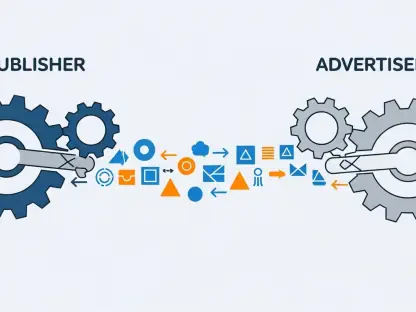AirIQ Inc. (TSXV: IQ), a notable contender in the Internet of Things (IoT) asset management arena, unveiled its Q1 2026 earnings on August 21, 2025, providing a detailed glimpse into its financial trajectory and strategic maneuvers for the quarter ending June 30, 2025. This report arrives at a critical juncture as the company shifts its focus from traditional one-time hardware sales to a subscription-driven model, mirroring industry-wide movements toward sustainable, predictable revenue streams. While the transition has led to a dip in overall revenue, the surge in recurring income offers a promising hint of future stability and growth, positioning AirIQ as a potential leader in a rapidly evolving sector.
The broader context of this earnings release reveals a company navigating the complexities of transformation. With the IoT asset management market projected to expand at a robust 14% annually through 2030, AirIQ stands to benefit from favorable tailwinds if it can successfully balance short-term financial pressures with long-term ambitions. Investors and industry observers are keenly focused on whether this strategic pivot will deliver the anticipated scalability, especially as mixed sentiments emerge regarding current profitability challenges.
Financial Performance in Q1 2026
Revenue Trends and Subscription Success
AirIQ’s financial results for the first quarter of 2026 reflect a deliberate strategic shift, with total revenue declining 14% year-over-year to $1.422 million due to a significant reduction in one-time hardware sales. However, a brighter spot emerges in the form of recurring revenue, which soared to a record $1.323 million, marking a 13% annual increase and an 8% sequential rise. This segment now constitutes an impressive 87% of total revenue, up from 79% in the previous year, underscoring the effectiveness of the company’s transition to a rental-based model. Such a focus prioritizes customer lifetime value over immediate profits, aligning with broader tech industry trends that favor consistent income streams over sporadic gains. This shift, while promising, comes at the cost of short-term financial metrics, setting the stage for a deeper examination of profitability impacts.
The emphasis on recurring revenue is not merely a financial statistic but a cornerstone of AirIQ’s vision for sustainable growth. With annualized recurring revenue now exceeding $4.8 million, the company demonstrates nine consecutive years of growth in this category, signaling a robust foundation for future expansion. This achievement suggests that AirIQ is successfully adapting to customer preferences for subscription services, a trend that mirrors the Software-as-a-Service (SaaS) model’s dominance in tech sectors. While the revenue drop raises eyebrows among some stakeholders, the consistent upward trajectory of subscription income provides a counterbalance, hinting at resilience in a competitive landscape. The challenge remains to maintain this momentum while addressing the immediate financial trade-offs that accompany such a transformation.
Profitability Pressures and Strategic Investments
The financial trade-offs of AirIQ’s pivot are starkly evident in the quarter’s profitability figures, with net income dropping a staggering 85% to $16,000 and gross profit declining by 5% to $872,000. CEO Mike Robb describes this downturn as a “strategic trade-off,” highlighting the company’s heavy reinvestment in critical areas like sales, marketing, and product development. These investments are designed to fortify the company’s market position and enhance long-term growth prospects, even at the expense of current earnings. The sharp decline in net income reflects not just the reduced hardware sales but also the upfront costs associated with building a scalable business model, raising questions about how long stakeholders will tolerate such sacrifices.
Despite the profitability challenges, there is an underlying rationale to AirIQ’s approach that merits attention. The reinvestment strategy aims to create a more predictable and resilient revenue base, which could ultimately shield the company from the volatility often associated with hardware-dependent income. This perspective is crucial for understanding the broader implications of the financial dip, as it suggests a calculated gamble on future stability over immediate returns. Investors are thus faced with a dual narrative: concern over diminished profits in the present versus optimism about a subscription-driven model that could deliver consistent cash flows. The balance between these competing dynamics will likely shape market sentiment in the quarters ahead.
Strategic Initiatives and Market Expansion
Building Alliances and Geographic Reach
AirIQ’s strategic initiatives in Q1 2026 reveal a concerted effort to bolster its market presence through key partnerships and geographic expansion. Collaborations with industry leaders like UScellular and Teltonika have enhanced channel access and reduced customer acquisition costs, providing a vital edge in a competitive field. Additionally, the establishment of a new office in San Diego marks a significant step toward penetrating the U.S. market, where demand for real-time fleet monitoring and compliance solutions continues to grow. This move positions AirIQ to capture a larger share of the North American IoT asset management space, leveraging regional opportunities to drive revenue and operational efficiencies. Such expansions are critical for scaling operations and reducing reliance on a single market.
The impact of these strategic alliances and geographic moves extends beyond immediate financial gains, offering AirIQ a platform to build long-term relationships with diverse stakeholders. By aligning with established players, the company not only lowers its operational overhead but also gains credibility among potential clients seeking reliable IoT solutions. The San Diego office, in particular, serves as a gateway to tap into the robust U.S. demand for advanced fleet management tools, which are increasingly essential for regulatory compliance and operational optimization. While these efforts require significant upfront investment, they lay the groundwork for sustained growth, provided AirIQ can navigate the logistical and competitive challenges of new market entry. The focus now shifts to execution and measurable outcomes from these initiatives.
Diversifying Offerings for Competitive Edge
AirIQ’s product portfolio stands out as another pillar of its strategic vision, featuring a range of solutions like battery-powered IoT devices and integrated video telematics tailored to varied industries. This diversity enables the company to serve an array of clients, from logistics firms needing fleet tracking to environmental agencies requiring air quality monitoring tools. By addressing such a broad spectrum of needs, AirIQ strengthens its market adaptability and reduces dependency on any single revenue source, a critical factor in the volatile tech sector. This approach not only enhances customer retention but also positions the company as a versatile player capable of meeting evolving industry demands.
The significance of product diversification cannot be overstated in the context of AirIQ’s long-term goals. Offering specialized IoT solutions allows the company to differentiate itself from competitors who may focus on narrower niches, thereby capturing a wider market share. The integration of video telematics, for instance, caters to the growing need for real-time data in fleet management, while battery-powered devices appeal to clients seeking cost-effective, portable options. These innovations reflect AirIQ’s commitment to staying ahead of technological curves, even as it grapples with the financial costs of research and development. As the IoT landscape continues to evolve, maintaining this breadth of offerings will be essential for sustaining growth and fending off competitive pressures.
Investor Sentiment and Future Outlook
Navigating Mixed Reactions and Confidence Signals
Investor sentiment surrounding AirIQ’s Q1 2026 performance reveals a divided landscape, with some expressing concern over the steep decline in profitability while others find encouragement in the robust growth of recurring revenue. The latter, now annualized at over $4.8 million, suggests a promising trajectory for predictable cash flows, a key attraction in the tech investment space. To reinforce confidence, AirIQ renewed its normal course issuer bid, enabling the repurchase of up to 5% of its shares through June 2026. This move, coupled with a strong balance sheet, signals management’s belief in the company’s intrinsic value and could enhance earnings per share, offering a potential uplift for long-term shareholders despite current financial strains.
The share repurchase program and recurring revenue growth serve as counterweights to the unease over profitability dips, framing AirIQ as a stock for patient investors. The mixed reactions highlight a broader tension between immediate results and future potential, a common theme in tech firms undergoing transformation. While short-term metrics like the 85% net income drop raise red flags, the strategic intent behind these figures—reinvestment for scalability—offers a compelling case for optimism. Stakeholders are thus tasked with weighing the risks of continued financial pressure against the promise of a subscription model that could deliver stability. Monitoring how these dynamics unfold in subsequent quarters will be crucial for gauging investor trust and market positioning.
Capitalizing on Industry Growth While Mitigating Risks
The IoT asset management sector, valued at $12.3 billion and projected to grow at 14% annually through 2030, presents a fertile ground for AirIQ to realize its ambitions. With recurring revenue now comprising 87% of total income, the company aligns closely with market trends favoring subscription-based models akin to SaaS frameworks. This strategic alignment could position AirIQ as a frontrunner if it sustains customer retention and capitalizes on industry expansion. However, the competitive nature of the sector and reliance on a rental model introduce risks, as any dip in client loyalty could disrupt revenue streams. Investors should closely track metrics like customer lifetime value and acquisition cost ratios to assess the durability of this growth path.
Beyond opportunities, the risks inherent in AirIQ’s strategy warrant careful consideration. Intense competition within the IoT space means that innovation and market responsiveness are non-negotiable for maintaining an edge. A heavy dependence on recurring revenue also exposes the company to vulnerabilities if economic conditions or customer preferences shift unfavorably. Despite these challenges, the broader market outlook remains positive, suggesting that AirIQ’s current sacrifices could yield substantial rewards with disciplined execution. For those invested in the company’s journey, keeping a pulse on operational performance and competitive dynamics will be essential to understanding whether the promise of long-term stability translates into tangible results.









